Is Your Saudi Arabia Factory Struggling with heat-resistant equipment for food & beverage? Try a Pallet Changing Machine
Running a large-scale factory is a constant battle against the elements. You might be dealing with extreme heat, dust, or other harsh conditions that wear down your equipment. Every day, you worry about unexpected breakdowns that halt production and cost you money. This pressure builds when you see aging machinery struggling to keep up, increasing the risk of accidents and hurting your efficiency. You know you need a change, but you need a solution that is robust, reliable, and provides a clear return on investment.
A pallet changing machine is an incredibly effective solution for any factory operating in a demanding environment. While it sounds simple, this equipment automates the transfer of goods from one pallet to another. This single step protects your products, improves safety, and streamlines your entire logistics chain. It is a powerful tool for boosting efficiency and resilience, whether you are in Saudi Arabia's food and beverage sector or a heavy industrial plant.
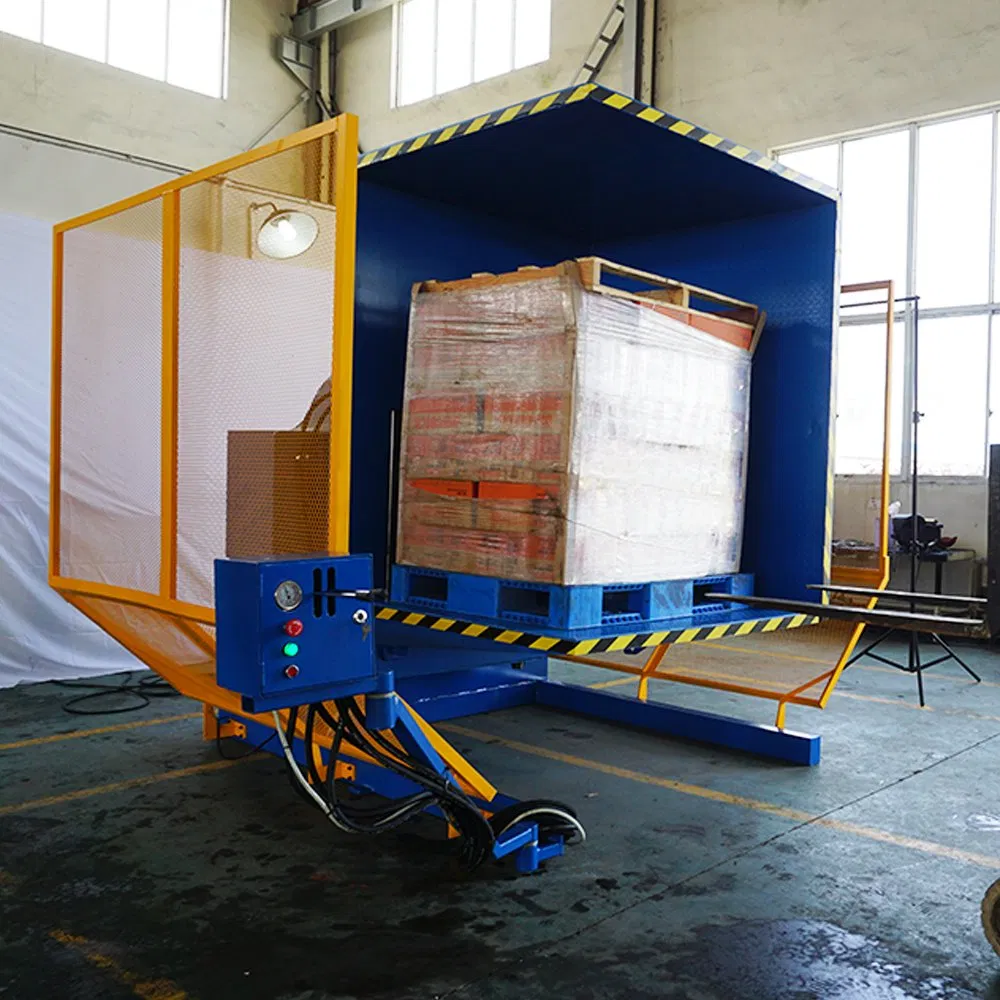
You might think a pallet changer is only useful for a warehouse or distribution center. I understand that perspective. But I have seen these machines transform operations in many industries. I started my career as an engineer on the factory floor. I know the daily challenges. I later built my own factory, SHJLPACK, and I learned that the smartest investments are often the ones that solve multiple problems at once. A pallet changer is one of those investments. It is not just about swapping pallets. It is about strengthening your entire production process from the inside out. Let's explore how.
How can a pallet changer solve problems beyond just swapping pallets?
You look at your production line and see major challenges. You are concerned about equipment failures, production bottlenecks, and workplace safety. It is easy to see a pallet changer as a simple machine that just moves goods. You might not see how it connects to these bigger issues. But this view can cause you to miss a huge opportunity. You might continue with slow, manual processes that risk worker injury and damage your products. The truth is, a pallet changer is a key piece of equipment that unlocks major operational improvements. It goes far beyond simply moving goods from one pallet to the next.
A pallet changer solves these larger problems by becoming an integrated control point in your production flow. It can automatically isolate and remove damaged pallets before they cause a problem. It can seamlessly separate goods for different shipping or storage requirements. Most importantly, it dramatically improves workplace safety by eliminating dangerous manual handling. It acts as a gatekeeper, ensuring only high-quality, stable pallets move through your facility.
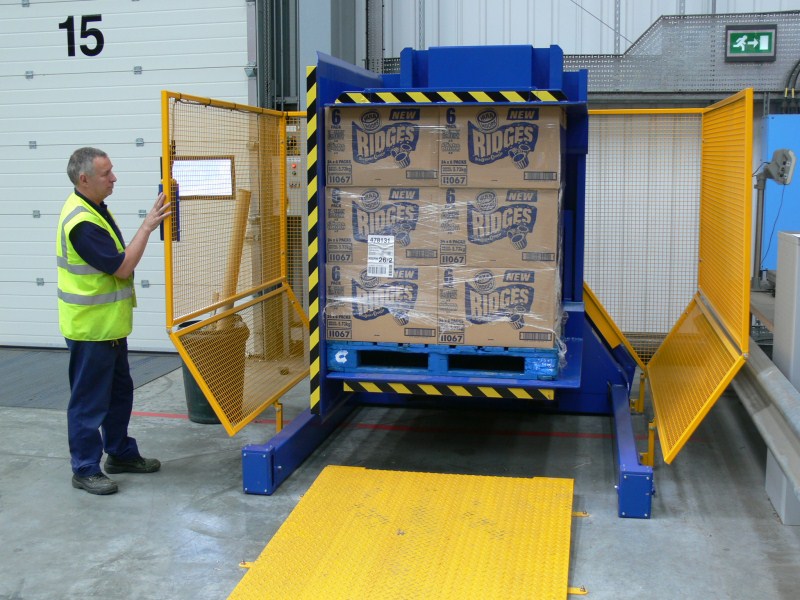
From Manual Labor to Automated Safety
In many factories, employees still transfer heavy loads by hand. This is slow and inefficient. It is also extremely dangerous. Workers can suffer back injuries, strains, and other physical problems from repetitive lifting. Wooden pallets add another risk. They can splinter, causing cuts and creating debris that can contaminate products or jam machinery. A pallet changer automates this entire process. The machine does all the heavy lifting. This removes the primary cause of many workplace injuries. It creates a safer environment for your team and reduces the risk of costly workers' compensation claims. Your valuable employees can then be moved to more skilled tasks.
A Gateway for Quality Control
Think of a pallet changer as a quality checkpoint. You receive raw materials on various types of pallets, some of which may be low-quality or damaged. You cannot allow these poor pallets into your automated production or warehousing systems. They can cause jams and breakdowns. A pallet changer at your receiving dock allows you to transfer incoming goods onto your own high-standard internal pallets. The same is true for outbound shipments. If a customer requires specific plastic pallets or heat-treated pallets, the machine handles the switch easily. This ensures your products arrive safely and meet all customer requirements, preventing rejections.
Reducing Product Damage
A broken or unstable pallet is a huge liability, especially in heavy industry. Imagine a pallet carrying a heavy steel coil or a stack of finished goods. If that pallet fails, the entire load can tip over. This not only destroys the product, which is a direct financial loss, but it also creates a massive safety hazard and can damage surrounding equipment, leading to extended downtime. By ensuring every load is on a solid, reliable pallet, the changer minimizes this risk. It maintains the integrity of your products from the end of the production line all the way to the customer.
| Factor | Manual Pallet Handling | Integrated Pallet Changer |
|---|---|---|
| Safety | High risk of worker injury (strains, cuts) | Dramatically reduced risk, automated process |
| Speed | Slow, labor-intensive, creates bottlenecks | Fast, consistent cycle times, improves flow |
| Product Damage | High risk from unstable or broken pallets | Very low risk, ensures load stability |
| Labor Cost | Requires multiple workers for a single task | Frees up workers for higher-value tasks |
| Quality Control | Inconsistent, depends on manual inspection | Automated checkpoint for pallet quality |
What is the real ROI of a pallet changer in a heavy industry environment?
As a business owner, you need to see the numbers. A new piece of equipment is a significant capital investment. You must be able to justify it with a clear and compelling return on investment (ROI). You might hesitate to invest, worrying about the upfront cost. You may feel it is safer to stick with your current methods, even if they are inefficient. But the cost of not changing can be much higher over time. The constant small losses from damaged products, injuries, and inefficiency add up. Let's break down the real ROI of a pallet changer, so you can see how it pays for itself.
The true ROI of a pallet changer in a heavy industrial setting comes from a combination of direct cost savings and powerful indirect gains. The direct savings include reduced labor costs, fewer damaged products, and lower spending on replacement pallets. The indirect benefits, like increased throughput, better safety records, and improved equipment uptime, are just as valuable. When you add all these factors together, a pallet changer can often deliver a full payback in under 24 months.
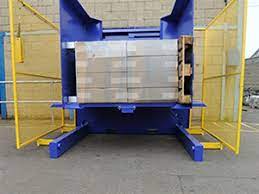
Calculating the Tangible Savings
Let's look at the hard numbers. First, consider labor. If it takes two workers 15 minutes to manually transfer a load, and you do this 20 times a day, that is over 6 hours of labor every single day. A pallet changer can do the same job in under a minute with one supervisor. This frees up your workers for other tasks, representing a significant annual saving in labor costs. Next, think about product damage. In a steel mill, even one damaged coil or bundle of wire due to a pallet failure can cost thousands of dollars. If a pallet changer prevents just a few of these incidents a year, it has a massive impact on your bottom line. Finally, there is the cost of the pallets themselves. By protecting your high-quality pallets from leaving the facility and removing bad pallets upon arrival, you reduce the number of new pallets you need to purchase.
The Intangible, but Critical, Gains
Some of the biggest benefits are not as easy to put on a spreadsheet, but they are critical to your goals. You aim for 95% equipment uptime. A pallet changer contributes to this by preventing bad pallets from jamming your automated conveyors or storage systems. This avoids unplanned downtime. Improved safety is another huge factor. A safer workplace leads to better employee morale and lower insurance premiums. It also protects your company's reputation. Finally, think about customer satisfaction. When your shipments always arrive on clean, stable, and compliant pallets, your customers are happy. This builds trust and leads to repeat business. You avoid the costs and headaches of dealing with rejected shipments.
A Steel Mill-Specific Example
I've spent my career in the world of packing machines, especially for steel wire and coils. I know how heavy and demanding these products are. A standard wooden pallet is often not enough. It can crack under the weight. A pallet changer allows you to use more robust pallets—like steel or heavy-duty plastic—for internal handling, then switch to a standard wooden pallet only for final shipping. This protects your heavy product throughout your facility. It also prevents the common problem of a coil being damaged because the pallet it was sitting on broke. This specific application shows how a pallet changer is not just a logistics tool but a core piece of production equipment in heavy industry.
| Cost Area | Manual Method Annual Cost | Pallet Changer Annual Cost | Estimated Annual Savings |
|---|---|---|---|
| Labor | $50,000 (2 workers, part-time) | $10,000 (1 supervisor, less time) | $40,000 |
| Product Damage | $30,000 (Est. 3 major incidents) | $5,000 (Reduced incidents) | $25,000 |
| New Pallet Purchase | $20,000 (High replacement rate) | $10,000 (Better pallet management) | $10,000 |
| Total | $100,000 | $25,000 | $75,000 |
How does a pallet changer fit into a modern, digitized factory?
You are actively pushing your factory toward the future. Your strategy includes a Manufacturing Execution System (MES), IoT sensors, and data analytics to achieve total visibility. In this context, a standalone machine can seem like a step backward. You might see it as an "island of automation" that cannot communicate with your other systems. If a new piece of equipment cannot connect to your central platform, it creates a blind spot. You lose valuable data, and it becomes harder to achieve your goal of a fully connected, smart factory. This is a valid concern. However, modern pallet changers are not standalone machines. They are designed to be fully integrated into a digitized ecosystem.
A modern pallet changer fits perfectly into a smart factory because it is built to communicate. It connects directly with your MES and Warehouse Management System (WMS). It is equipped with sensors that provide a stream of real-time data about its own performance and the loads it is handling. This data includes cycle times, load weights, and operational status. This information flows directly into your central systems, helping you achieve the comprehensive production visibility that you are aiming for.
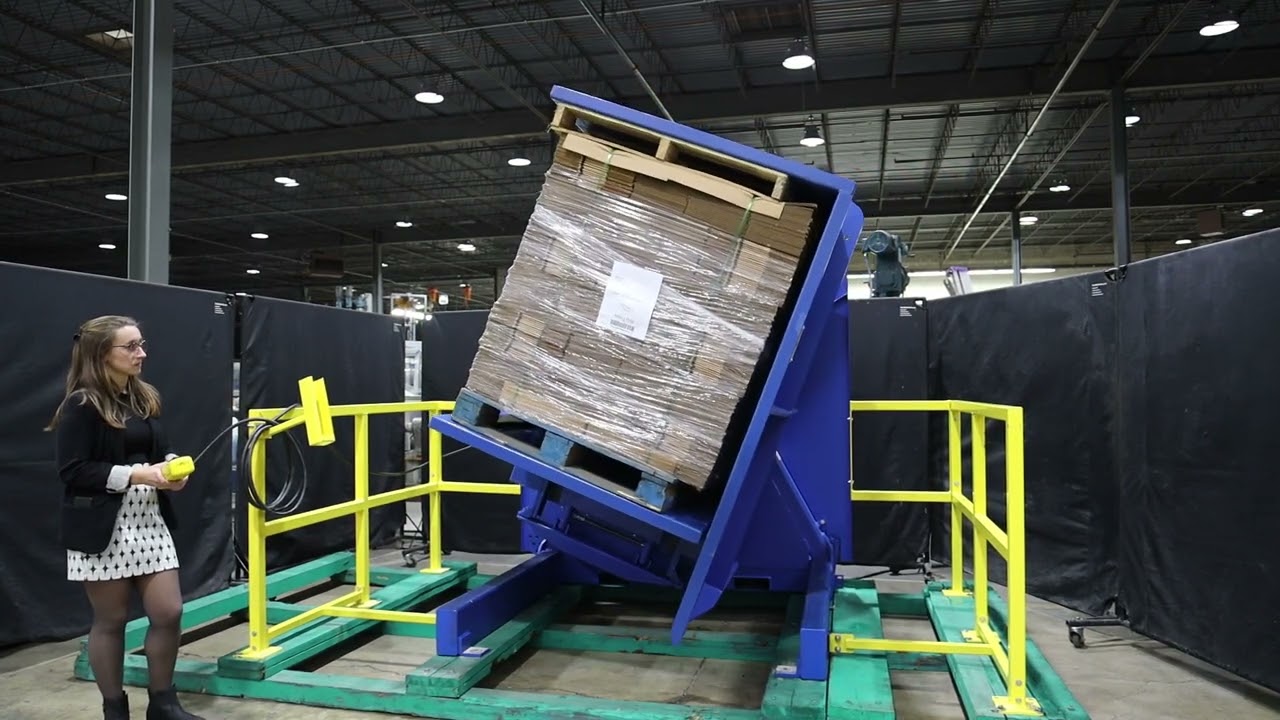
Connecting to Your Manufacturing Execution System (MES)
Integration is key. A modern pallet changer can be programmed to communicate with your MES. Your MES can send commands directly to the machine. For example, the MES can read a barcode on a load and tell the pallet changer, "This product is going to Customer X, so transfer it to a 1200x1000mm plastic pallet." After the task is done, the pallet changer sends a confirmation message back to the MES, like "Cycle complete, load transferred." This two-way communication automates decision-making and eliminates manual errors. It ensures the entire process is tracked and recorded digitally.
The Role of IoT Sensors for Predictive Maintenance
One of your major goals is to use predictive maintenance to increase uptime. A smart pallet changer is an active participant in this strategy. It is fitted with various IoT sensors that monitor its health. Vibration sensors can detect early signs of mechanical wear. Temperature sensors on motors can warn of potential overheating. Cycle counters track the machine's usage, so you can schedule maintenance based on actual work performed, not just a fixed calendar. This data is sent to your maintenance platform, which can automatically create a work order before a breakdown occurs. This moves you from a reactive "fix it when it breaks" model to a proactive, predictive one.
Data for Big Picture Analysis
The data from a single pallet changer is useful. But when you combine it with data from your entire facility, it becomes powerful. The information—such as how many pallets are changed per hour, the average weight of loads, and which pallet types are used most often—can be fed into your big data analytics platform. By analyzing this data, your team can identify hidden bottlenecks in your logistics flow. Maybe you discover that a certain product line is waiting too long for pallet exchange. Or you find that using a different type of pallet could speed up the entire process. This data-driven approach allows you to make smarter decisions and continuously optimize your operations, helping you reduce costs and increase efficiency.
| Digitization Feature | Benefit | Impact on Your Goals |
|---|---|---|
| MES/WMS Integration | Automates decision-making, reduces errors | Moves you closer to full digital transformation |
| IoT Sensors | Enables predictive maintenance, prevents downtime | Helps achieve 95% equipment effective run time |
| Data Output | Provides real-time visibility into logistics flow | Supports data analysis for cost reduction of 8% |
Why is a strategic partner more important than just a supplier for this equipment?
You can buy a machine from many places. You can look through a catalog, visit a trade show, or click a button on a website. You might even find a lower price from a simple supplier. But what happens after the sale? What happens when you need to integrate that machine into your complex production line? Or when you need a special modification for your heavy-duty steel products? What happens when the machine has a problem at 2 a.m. and you need expert support immediately? A low-cost supplier often disappears when you need them most. A true strategic partner, on the other hand, is with you for the long journey. They are invested in your success.
A strategic partner is critical because they provide much more than just a piece of metal. They bring deep expertise in customizing the machine for your unique application, like handling heavy steel coils. They provide hands-on support to integrate the equipment with your existing factory systems. And they offer reliable, long-term after-sales service and maintenance. This partnership approach is what ensures you get the maximum value and operational stability from your investment.
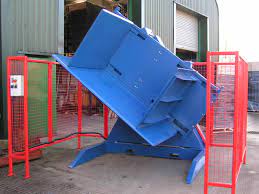
My Journey: From Engineer to Partner
I learned this lesson myself. When I started as an engineer, I just focused on the technical specs of a machine. But when I built my own factory, I had to think like a business owner. Early on, I bought some equipment based on price alone. It was a mistake. The integration was a nightmare. The supplier's support was slow and unhelpful. The downtime and frustration cost me far more than the initial savings. That experience shaped the philosophy of my company, SHJLPACK. We do not just sell machines. We build relationships. We take the time to understand your entire process, your challenges, and your goals. We work with you to find the right solution, not just sell you a product.
Customization for Heavy Industry
A pallet changer designed for a food and beverage warehouse cannot survive in a steel mill. The demands are completely different. A machine for your environment needs a stronger, reinforced frame to handle extreme weights. It requires more powerful and durable hydraulic or electric systems. It needs special safety features to manage heavy, potentially unstable loads. A simple supplier sells you their standard model. A strategic partner listens to your needs. They analyze your product and your process. Then, they design and build a machine that is perfectly suited for your heavy-duty application. This customization is the difference between a machine that works and a machine that excels.
Full-Cycle Support: From Design to Maintenance
Your desire for full-process support is exactly what a partner delivers. The relationship starts long before the purchase. A good partner will help you with the initial planning, analyzing your factory layout to find the best location for the machine. They will manage the installation and commissioning to ensure it runs perfectly from day one. They will train your operators and maintenance staff so your team can use and care for the equipment confidently. And they will work with you to create a preventive maintenance schedule, providing spare parts and technical support to ensure your machine runs reliably for years. This end-to-end support is what turns an equipment purchase into a successful long-term investment.
| Aspect | Standard Supplier Approach | Strategic Partner Approach |
|---|---|---|
| Customization | Offers a standard, one-size-fits-all product. | Analyzes your specific needs and engineers a custom solution. |
| Integration | Leaves integration with your other systems up to you. | Provides expert support to connect the machine to your MES/WMS. |
| After-Sales Support | Limited support, slow response times. | Fast, reliable support, preventive maintenance, and training. |
| Long-Term Vision | Focused on the single transaction. | Focused on building a long-term relationship and your success. |
Conclusion
A pallet changer is a powerful tool. It enhances safety, boosts efficiency, and integrates with your digital factory. Choosing a partner, not just a supplier, ensures you unlock its full potential.




